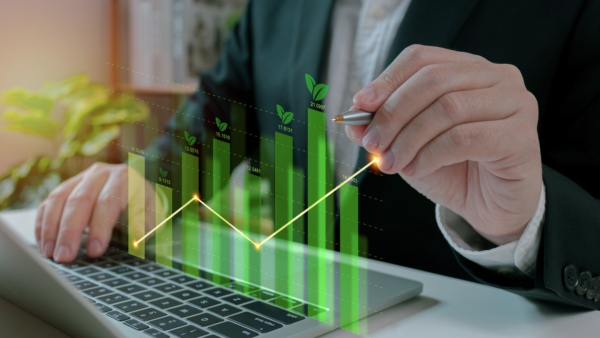July 2024 – Field engineer networks play a pivotal role in ensuring the smooth operation and maintenance of various infrastructures and systems. However, the environmental impact stemming from the lifecycle management of engineering equipment has become a pressing concern. Companies are aiming to optimise lifecycle management practices to achieve zero waste disposal in the field engineering domain and drive reuse and recycling.
This blog explores the challenges faced when implementing a circular economy within field engineer networks, delving into the strategies and benefits associated with a lifecycle management approach.
Understanding lifecycle management
Lifecycle management involves the comprehensive oversight of a product or equipment throughout its entire lifespan, from procurement to disposal. It represents an integrated approach to overseeing the entire lifespan of goods and services aimed at promoting sustainable production and consumption practices1.
In the context of field engineer networks, closed-loop Product Lifecycle Management (PLM) encompasses the deployment, maintenance, and eventual retirement or repurposing of engineering equipment and products. Closed-loop PLM focuses on the full lifecycle of a product, from conception to end-of-life. With the transition towards a circular economy, field engineer supply chains must take into consideration their impact on the environment and identify opportunities to create value by reducing, maintaining and recovering product value where possible2.
Sustainability challenges faced by field engineer equipment management
One of the primary challenges in implementing a circular business model is the reverse logistics and waste management of equipment. Traditional approaches of transferring the majority of waste to landfills, often lead to substantial waste generation, contributing to environmental

degradation3. Disposal of equipment and hazardous materials without proper consideration for its environmental impact results in an increased carbon footprint, pollution, and strain on landfill capacities4.
The cost of passing equipment back through a reverse supply chain must be considered, and the feasibility of value being recovered can help identify the most cost-effective solutions for creating a circular business model5. Reverse logistics can increase operating costs as the transportation, warehousing and processing of returned equipment must be factored in6.
Inventory management of returned equipment must also be considered, the products must be stored until the most effective and appropriate sustainable method of disposal or repurposing can be applied.
Field engineer lifecycle management solutions
The engineer zero-to-landfill initiative and closed-loop PLM advocates for a sustainable model centred around minimising waste generation and maximising resource value.
This involves:
- Strategic procurement and conception: Designing and selecting equipment with durability, recyclability, and minimal environmental impact in mind to maximise recoverability.
- Maintenance: Implementing proactive maintenance services to engineer equipment sales contracts to unlock value through equipment life extension.
- End-of-life management: Retain product ownership and establish efficient reverse logistics processes. Prioritise recycling, reusing or remanufacturing of components, or employing eco-friendly disposal methods like responsible dismantling and waste-to-energy conversion.
- Data-driven Insights: Leveraging data analytics to optimise inventory, predict maintenance needs, and identify opportunities for efficiency improvements.
Benefits of lifecycle management in field engineer networks
Implementing Product Lifecycle Management and a business model focused on circularity in field engineer networks yields multifaceted benefits:
- Environmental conservation: Reducing landfill waste and minimising resource depletion contributes to a healthier environment and a more sustainable business model.
- Value Creation: A circular economy business model and PLM solutions can extend the value of equipment or components.
- Active Commitment to Sustainability Goals: Implementing lifecycle management solutions can actively support the sustainability targets of the business and comply with legal regulations around environmental policies.
- Enhanced Reputation: Embracing sustainable practices enhances an organisation’s reputation and appeal to environmentally conscious stakeholders.
Transitioning to a closed-loop model requires concerted efforts, including cultural shifts within organisations, investments in technology, industry-wide collaboration and process transformations. Overcoming resistance to change, ensuring compatibility with existing infrastructures, and navigating regulatory landscapes pose ongoing challenges.
However, with growing awareness and advancements in sustainable solutions, the circular economy model holds promise for revolutionising the sustainability of field engineer networks, creating a more environmentally responsible industry. Closed-loop PLM aims to prioritise sustainability, minimise waste generation, and maximise the value of equipment and its components.
References
- G. Itskos, N. Nikolopoulos, D.-S. Kourkoumpas, A. Koutsianos, I. Violidakis, P. Drosatos and P. Grammelis – Chapter 6 – Energy and the Environment – 2016
- Dennis Vegter, Jos van Hillegersberg and Matthias Olthaar – Supply chains in circular business models: processes and performance objectives, Resources, Conservation and Recycling – 2020
- Maisam Abbasi and Fredrik Nilsson – Developing environmentally sustainable logistics: Exploring themes and challenges from a logistics service providers’ perspective – July 2016
- Department for Environment, Food & Rural Affairs and Environment Agency – Our waste, our resources: a strategy for England – December 2018
- Atalay Atasu, Céline Dumas, and Luk N. Van Wassenhove – The Circular Business Model – July – August 2021
- Netish Sharma – Navigating the Challenges of High Costs in Reverse Logistics and Product Returns – September 2023
